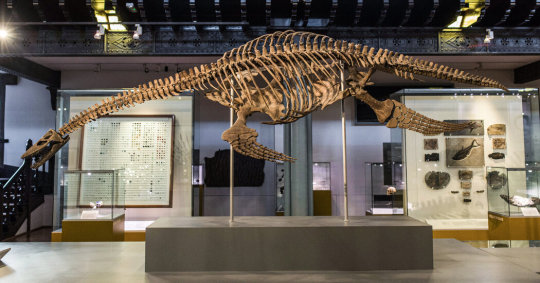#production line
Photo

3K notes
·
View notes
Text

#meme#memes#shitpost#shitposting#humor#funny#lol#satire#funny memes#funny humor#funny meme#comedy#dark humor#plant based me#production line#vegetarianism#veganism#rat poison#plant based meat#fact#facts#irony#joke#parody
31 notes
·
View notes
Text
guy who is really, really into detroit hockey history and also video editing: hey guess what i made
#baby's first fan edit. for Them#rickie.mov#gordie#ted#sid abel#production line#drw#hockey history#michigan history#next one won't have a fade to black. it's just that there's no video footage of their jerseys that i could find
19 notes
·
View notes
Text

Ju-87 Stuka dive bombers on a production line in the hangars of Tempelhof airport are readied for assembly - Berlin 1943
#world war two#1940s#worldwar2photos#history#ww2#ww2 history#wwii#world war 2#wwii era#luftwaffe#aviation#stuka#ju87#tempelhof#berlin#1943#production line
161 notes
·
View notes
Text






Paintball Production line
4 notes
·
View notes
Text
Sound reveals giant blue whales dance with the wind to find food
https://sciencespies.com/environment/sound-reveals-giant-blue-whales-dance-with-the-wind-to-find-food/
Sound reveals giant blue whales dance with the wind to find food
A study by MBARI researchers and their collaborators published today in Ecology Letters sheds new light on the movements of mysterious, endangered blue whales. The research team used a directional hydrophone on MBARI’s underwater observatory, integrated with other advanced technologies, to listen for the booming vocalizations of blue whales. They used these sounds to track the movements of blue whales and learned that these ocean giants respond to changes in the wind.
Along California’s Central Coast, spring and summer bring coastal upwelling. From March through July, seasonal winds push the top layer of water out to sea, allowing the cold water below to rise to the surface. The cooler, nutrient-rich water fuels blooms of tiny phytoplankton, jumpstarting the food web in Monterey Bay, from small shrimp-like krill all the way to giant whales. When the winds create an upwelling event, blue whales seek out the plumes of cooler water, where krill are most abundant. When upwelling stops, the whales move offshore into habitat that is transected by shipping lanes.
“This research and its underlying technologies are opening new windows into the complex, and beautiful, ecology of these endangered whales,” said John Ryan, a biological oceanographer at MBARI and lead author of this study. “These findings demonstrate a new resource for managers seeking ways to better protect blue whales and other species.”
The directional hydrophone is a specialized underwater microphone that records sounds and identifies the direction from which they originate. To use this technology to study blue whale movements, researchers needed to confirm that the hydrophone reliably tracked whales. This meant matching the acoustic bearings to a calling whale that was being tracked by GPS. With confidence in the acoustic methods established, the research team examined two years of acoustic tracking of the regional blue whale population.
This study built upon previous research led by MBARI Senior Scientist Kelly Benoit-Bird, which revealed that swarms of forage species — anchovies and krill — reacted to coastal upwelling. This time, researchers combined satellite and mooring data of upwelling conditions and echosounder data on krill aggregations with the acoustic tracks of foraging blue whales logged by the directional hydrophone.
“Previous work by the MBARI team found that when coastal upwelling was strongest, anchovies and krill formed dense swarms within upwelling plumes. Now, we’ve learned that blue whales track these dynamic plumes, where abundant food resources are available,” explained Ryan.
advertisement
Blue whales recognize when the wind is changing their habitat and identify places where upwelling aggregates their essential food — krill. For a massive animal weighing up to 150 tonnes (165 tons), finding these dense aggregations is a matter of survival.
While scientists have long recognized that blue whales seasonally occupy Monterey Bay during the upwelling season, this research has revealed that the whales closely track the upwelling process on a very fine scale of both space (kilometers) and time (days to weeks).
“Tracking many individual wild animals simultaneously is challenging in any ecosystem. This is especially difficult in the open ocean, which is often opaque to us as human observers,” said William Oestreich, previously a graduate student at Stanford University’s Hopkins Marine Station and now a postdoctoral fellow at MBARI. “Integration of technologies to measure these whales’ sounds enabled this important discovery about how groups of predators find food in a dynamic ocean. We’re excited about the future discoveries we can make by eavesdropping on blue whales and other noisy ocean animals.”
Background
Blue whales (Balaenoptera musculus) are the largest animals on Earth, but despite their large size, scientists still have many unanswered questions about their biology and ecology. These gentle giants seasonally gather in the Monterey Bay region to feed on small shrimp-like crustaceans called krill.
advertisement
Blue whales are elusive animals. They can travel large distances underwater very quickly, making them challenging to track. MBARI researchers and collaborators employed a novel technique for tracking blue whales — sound.
MBARI’s MARS (Monterey Accelerated Research System) observatory offers a platform for studying the ocean in new ways. Funded by the National Science Foundation, the cabled observatory provides continuous power and data connectivity to support a variety of instruments for scientific experiments.
In 2015, MBARI researchers installed a hydrophone, or underwater microphone, on the observatory. The trove of acoustic data from the hydrophone has provided important insights into the ocean soundscape, from the migratory and feeding behaviors of blue whales to the impact of noise from human activities.
In 2019, MBARI and the Naval Postgraduate School installed a second hydrophone on the observatory. The directional hydrophone gives the direction from which a sound originated. This information can reveal spatial patterns for sounds underwater, identifying where sounds came from. By tracking the blue whales’ B call — the most powerful and prevalent vocalization among the regional blue whale population — researchers could follow the movements of individual whales as they foraged within the region.
Researchers compared the directional hydrophone’s recordings to data logged by tags that scientists from Stanford University had previously deployed on blue whales. Validating this new acoustic tracking method opens new opportunities for simultaneously logging the movements of multiple whales. It may also enable animal-borne tag research by helping researchers find whales to tag. “The integrated suite of technologies demonstrated in this paper represents a transformative tool kit for interdisciplinary research and mesoscale ecosystem monitoring that can be deployed at scale throughout protected marine habitats. This is a game changer and brings both cetacean biology and biological oceanography to the next level,” said Jeremy Goldbogen, an associate professor at Stanford University’s Hopkins Marine Station and a coauthor of the study.
This new methodology has implications not only for understanding how whales interact with their environment and one another but also for advancing management and conservation.
Despite protections, blue whales remain endangered, primarily from the risk of collisions with ships. This study showed that blue whales in Monterey Bay National Marine Sanctuary regularly occupy habitat transected by shipping lanes. Acoustic tracking of whales may provide real-time information for resource managers to mitigate risk, for example, through vessel speed reduction or rerouting during critical periods. “These kinds of integrated tools could allow us to spatially and temporally monitor, and eventually even predict, ephemeral biological hotspots. This promises to be a watershed advancement in the adaptive management of risks for protected and endangered species,” said Brandon Southall, president and senior scientist for Southall Environmental Associates Inc. and a coauthor of the research study.
Support for this research was provided by the David and Lucile Packard Foundation. The National Science Foundation funded the installation and maintenance of the MARS cabled observatory through awards 0739828 and 1114794. Directional acoustic processing work was supported by the Office of Naval Research, Code 32. Tag work was funded in part by the National Science Foundation (IOS-1656676), the Office of Naval Research (N000141612477), and a Terman Fellowship from Stanford University.
#Environment
#10-2022 Science News#2022 Science News#acts of science#Earth Environment#earth science#Environment and Nature#everyday items#Nature Science#New#News Science Spies#October 2022 Science News#Our Nature#planetary science#production line#sci_evergreen1#Science#Science Channel#science documentary#Science News#Science Spies#Science Spies News#Space Physics & Nature#Space Science#Environment
36 notes
·
View notes
Text




[We're living in repetition. Content in the same old shtick again. Now the routine's turning to contention. Like a production line going over and over and over, roller coaster.]
#s34e04 creative creations#guy fieri#guyfieri#diners drive-ins and dives#same old shtick#production line#roller coaster#repetition#content#routine
4 notes
·
View notes
Photo


#Taito#arcade#arcade cabinet#game center#video games#gaming#arcade machine#production line#80s#1980s#80s arcade#80s arcade game#arcade games#design#style
60 notes
·
View notes
Quote
For godly grief produces a repentance that leads to salvation without regret, whereas worldly grief produces death.
2 Cor. 7:10
5 notes
·
View notes
Text
0 notes
Text
Production Line Systems - Expert Technologies Group
Revolutionise Your Production Line with Expert Technologies Group
In the intricate world of production, efficiency and precision are paramount. If you’re seeking a partner to elevate your production line systems, look no further than Expert Technologies Group. Here’s why they are the preferred choice for businesses aiming for excellence:
Cutting-Edge Technology: Expert Technologies Group is synonymous with innovation. Their commitment to staying at the forefront of technological advancements means your production line will benefit from the latest and most advanced systems. Embrace efficiency and precision with state-of-the-art technology tailored to your needs.
Seamless Integration: Upgrading your production line doesn’t have to be a disruptive process. Expert Technologies Group ensures seamless integration of their systems into your existing setup. Minimise downtime and disruptions while maximizing the potential of your production capabilities.
Cost-Effective Solutions: Quality doesn’t always have to come with a hefty price tag. Expert Technologies Group is committed to delivering cost-effective solutions. They work within your budgetary constraints without compromising on the quality and capabilities of the systems they provide.
Streamlined Workflow: Efficiency is at the core of Expert Technologies Group’s ethos. Their production line systems are meticulously crafted to streamline your workflow. Experience reduced bottlenecks, improved throughput, and a more synchronised production process.

Elevate your production capabilities with Expert Technologies Group. It’s not just about upgrading systems; it’s about future-proofing your operations. Contact them today and take the first step towards a more efficient, precise, and technologically advanced production line.
0 notes
Text

btw while we’re talking gordie and ted have you guys seen this picture
#preserving the twitter context for archival reasons#GROWN ASS MEN. make your own scrambled eggs!!#drw#production line
17 notes
·
View notes
Text
The Significance of the Rubber Salt Bath Curing Production Line
In the manufacturing landscape, the advent of the Rubber Salt Bath Curing Production Line marks a significant leap forward in the process of curing rubber. This innovative production line introduces a range of advancements that promise to streamline operations, improve product quality, and contribute to the overall efficiency of the rubber industry.
Traditional curing methods often face challenges related to time and efficiency. The Rubber Salt Bath Curing Production Line addresses these concerns head-on by offering a streamlined and accelerated curing process. The salt bath's ability to transfer heat evenly and efficiently to the rubber accelerates the curing time, starting a notable reduction in production cycles. This not only enhances productivity but also allows manufacturers to meet increasing market demands with greater ease.
0 notes
Photo

(via GIPHY)
#giphy#meme#glasses#factory#charlie chaplin#dao#productive#nouns#noggles#nounish#goldypix#modern times#conveyor belt#production line#goat club#proliferate
1 note
·
View note
Text
Fossil Find Tantalizes Loch Ness Monster Fans
https://sciencespies.com/news/fossil-find-tantalizes-loch-ness-monster-fans/
Fossil Find Tantalizes Loch Ness Monster Fans

Plesiosaurs went extinct 66 million years ago, but evidence that the long-necked reptiles lived in freshwater, not just oceans, has offered hope to Nessie enthusiasts.
LONDON — Millions of years before the first (alleged) sighting of the Loch Ness monster, populations of giant reptiles swam through Jurassic seas in areas that are now Britain. Known as plesiosaurs, these long-necked creatures were thought to have dwelled exclusively in oceans.
But a discovery published in a paper last week by researchers in Britain and Morocco added weight to a hypothesis that some Loch Ness monster enthusiasts have long clung to: that plesiosaurs lived not just in seas, but in freshwater, too. That could mean, they reasoned excitedly, that Nessie, who is sometimes described as looking a lot like a plesiosaur, really could live in Loch Ness, a freshwater lake.
Local papers have celebrated the finding. It “gives further credit to the idea that Nessie may have been able to survive and even thrive in Loch Ness,” said an article on page 32 of the Inverness Courrier, a biweekly newspaper in the Scottish Highlands. “Loch Ness Monster bombshell,” blared a headline from Britain’s Daily Express tabloid. “Existence of Loch Ness Monster is ‘plausible’” read headlines in The Scotsman, The Telegraph and elsewhere, seizing on a phrase in the University of Bath’s announcement of the study’s findings.
This is not the first study to find that plesiosaurs lived in freshwater. “This new study is simply providing additional evidence for certain members of this group living in freshwater,” said Dean Lomax, a paleontologist and visiting scientist at the University of Manchester. “We’ve always known this.”
But Nick Longrich, the lead author of the study, said his team had one of the stronger cases for it because they found fossils of 12 plesiosaurs, proof that it was not just one plesiosaur that wandered into freshwater and then died there.
“The more plesiosaur fossils discovered in freshwater environments, the more this will further build the picture to explain why plesiosaurs might be turning up in freshwater environments around the world,” said Georgina Bunker, a student who was a co-author of the paper.
Dr. Longrich, a paleontologist and evolutionary biologist at the University of Bath, said it was “completely unexpected” to find the fossil of a plesiosaur that had lived in an 100-million-year-old freshwater river system that is now the Sahara.
While on a research trip to Morocco, he was sifting through a box in the back room of a shop when he spotted a “kind of chunky” bone, which turned out to be the arm of a five-foot long baby plesiosaur. Dr. Longrich paid the cashier no more than 200 Moroccan Dirham, or about $20, after bargaining to bring down the price, and brought the fossils back to Britain for further study.
Nick Longrich/University of Bath
“Once we started looking, the plesiosaur started turning up everywhere,” he said. “It reminds you there’s a lot we don’t know.” (The fossils will be returned to museums in Morocco at a later date, he said.)
As the news of the study made headlines last week, some Nessie fans were hopeful. George Edwards, who was for years the skipper of a Loch Ness tourism boat called the Nessie Hunter, said that for him the new study showed how creatures could adapt to survive in new environments — and that the world is full of mysteries. Take the coelacanth, a bony fish that was thought to have become extinct millions of years ago but was found in 1938 by a South African museum curator on a fishing trawler. “Lo and behold, they found them, alive and kicking,” Mr. Edwards said. “Anything is possible.”
Mr. Edwards said he had seen unexplained creatures in Loch Ness plenty of times: “There’s got to be a family of them.” From what he has seen, the creatures have a big arched back, no fins and are somewhat reminiscent of a plesiosaur.
But there is one detail that some Nessie lovers may have overlooked in their embrace of the plausibility of Nessie’s existence: Plesiosaurs became extinct at the same time as dinosaurs did, some 66 million of years ago. Loch Ness was only formed about 10,000 years ago, and before that it was ice.
Valentin Fischer, an associate professor of paleontology at the University of Liège in Belgium, said that it would currently be impossible for a marine reptile like the plesiosaur to live in Loch Ness.
Nick Longrich/University of Bath
The first recorded sighting of Nessie dates back to the sixth century A.D., when the Irish monk St. Columba was said to have driven a creature into the water. But global interest was revived in the 20th century, after a British surgeon, Col. Robert Wilson, took what became the most famous photo of the Loch Ness monster in 1934. Sixty years later, the photograph was revealed to be a hoax.
But some people were not discouraged, and, ever since, throngs of tourists have traveled to Loch Ness each year in hopes of seeing the monster.
There have been more than 1,100 sightings at Loch Ness, including four this year, according to the register of official sightings.
A famous photograph of the Loch Ness Monster taken in 1934 was later revealed to have been a hoax.Keystone/Getty Images
Steve Feltham, a full-time monster hunter who has lived on the shores of Loch Ness for three decades, said the British-Moroccan study was interesting, but that it was irrelevant to his search. Ever since it became clear that the famous 1934 photo of Nessie was fake, he has stopped believing that Nessie was a plesiosaur. Plesiosaurs have to come up for air, so he figures he would have seen it during the 12 hours a day that he scans the loch. Instead, he scans the water for giant fish that look like a boat turned upside down.
“I struggle to think of any bona fide Nessie hunter that still believes in the plesiosaur,” he said. “The hunt has moved on from that.”
#News
#2022 Science News#8-2022 Science News#acts of science#August 2022 Science News#Earth Environment#earth science#Environment and Nature#everyday items#Nature Science#New#News Science Spies#Our Nature#planetary science#production line#sci_evergreen1#Science#Science Channel#science documentary#Science News#Science Spies#Science Spies News#Space Physics & Nature#Space Science#News
38 notes
·
View notes
Text
Day 25: Compass
What do you do when the prompt is hard and hands are not cooperating when you try and draw them? ROBOTS!
I deliberately tried to make the head small to look inhuman but I think I just made it look out of proportion. You win some you lose some.

0 notes